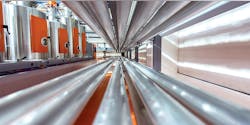How California Plans to Make Geothermal More Economically Feasible
Held back by the costs associated with harnessing it, geothermal power provides only about 6% of California’s total power. Scientists at the Department of Energy’s Lawrence Berkeley National Laboratory are investigating how to make geothermal energy more accessible and affordable through projects funded by the California Energy Commission.
California’s unique geologic characteristics are conducive to studying geothermal in more applications than in other regions of the U.S. Moreover, this abundance of viable geothermal conditions provides a solution to the state’s goal of generating half of its electricity from renewables by 2030.
The first project will improve visualizing where and how fluids move underground, and the second will develop flexible geothermal systems that integrate with other renewable energy sources.
By placing seismic recorders at the Geysers, the world’s largest geothermal field, researchers from Berkeley Lab will track fluid flow in fractured geothermal reservoirs, which could make the process of finding and making wells more cost-effective.
“If they can increase the likelihood of getting a productive well every time they drill, it would be huge,” says Lawrence Hutchings, a Berkeley Lab microearthquake imaging specialist who has worked in geothermal fields worldwide. “More than 10% of California’s total renewable energy capacity comes from geothermal, so the potential impact of this technology is exciting.”
The other Berkeley Lab project has a goal of enabling conversion of geothermal production to flexible-mode production, which would allow geothermal to supplement other renewable energy sources like wind and solar.
Researchers will adapt two already existing modeling tools for wellbore and geothermal reservoir integrity to integrate with geomechanical tools into an improved thermal-hydrological-mechanical-chemical (THMC) model to address technical challenges.
“This will provide the necessary tools for investigating all the challenges related to flexible-mode production and predict short- and long-term impacts,” says Berkeley Lab scientist Jonny Rutqvist. “The advantages to California are many, including greater grid reliability, increased safety and lower greenhouse gas emissions.”
